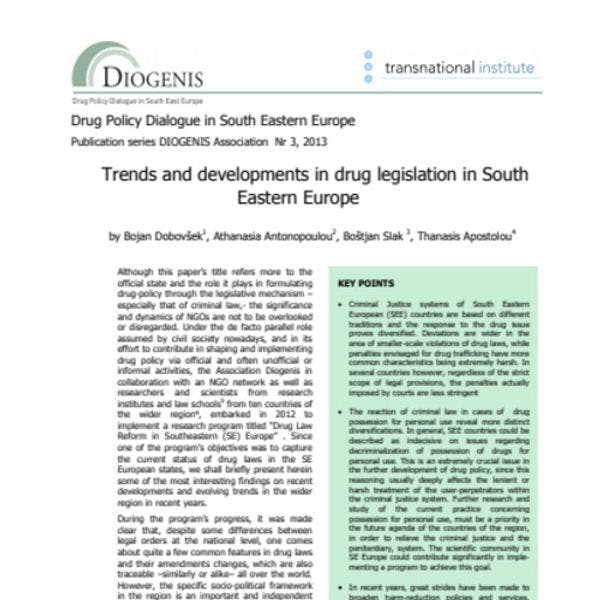Trends and developments in drug legislation in South Eastern Europe
SE European countries have adopted –to a greater or lesser extent– a national strategy within the limits of international conventions and the European Strategy on Drugs model, but much room exists for substantial changes and improvements. The major problems encountered arise from the differences that emerge between the institutional framework formally declared and the policies ultimately applied in practice. Furthermore, these issues deteriorate because most of these legal orders fall short in assessing their relevant strategies and formal mechanisms.
According to the majority of national strategies, the importance of the role NGOs need to play is emphasized. It is noteworthy that, according to most National Strategies of SE European countries, it is acknowledged that NGOs and civil society should play an important and active role, especially in the fields of treatment and rehabilitation, but also in harm reduction policies. However, a significant deviation is observed between the provisions of national strategies and their practical application, mainly attributed to lack of or insufficiency of relevant funding. The influence of NGOs in legislative decision-making is still quite limited. Neverthe-less, while positively recognizing the need for an interdisciplinary and multi-sector approach and addressing of the drug legislation issue, criminal law firmly persists as a determining factor and the chief regulator of the situation in most coun-tries of the region.
Keep up-to-date with drug policy developments by subscribing to the IDPC Monthly Alert.
Topics
Regions
Related Profiles
- Diogenis
